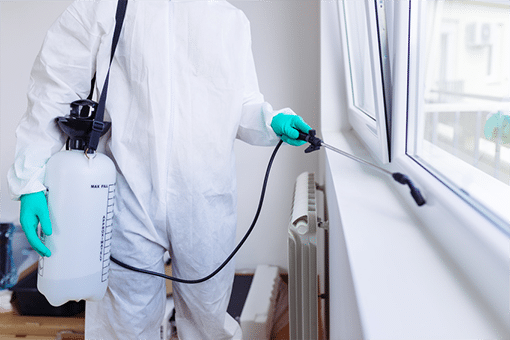Specialist Bed Bug Exterminator: Rest Easy Understanding Your Home is Bug-Free!
Specialist Bed Bug Exterminator: Rest Easy Understanding Your Home is Bug-Free!
Blog Article
Specialist Bug Control Techniques for Long-Term Results
In the realm of pest control, attaining sustained efficiency and long-lasting outcomes calls for a meticulous approach that transcends plain extermination. Professional pest control techniques encapsulate a detailed technique that starts with an extensive examination and assessment, complied with by accurate insect recognition to recognize their actions patterns. The execution of Integrated Bug Monitoring (IPM) principles, coupled with eco-conscious treatments, forms the foundation of sustainable pest obliteration. The true examination lies in the recurring tracking and upkeep of the dealt with areas, guaranteeing a pest-free setting for the direct future. By diving into the ins and outs of these strategies, a much deeper understanding of specialist parasite control approaches for withstanding outcomes arises.
Inspection and Assessment
Upon getting in a property for bug control solutions, the first step is an extensive evaluation and assessment to determine the level of the invasion and determine one of the most reliable treatment plan. Professional insect control service technicians are educated to thoroughly take a look at the properties, looking for signs of bug task such as droppings, munch marks, nests, or any kind of structural damages. They will additionally evaluate the problems that might be drawing in insects, such as food resources, water leakages, or entrance factors.

Insect Identification and Actions

Additionally, comprehending the habits of the recognized parasite is key to applying effective control measures. Knowing where bugs nest, what they feed on, and their activity patterns can assist pest control experts develop approaches to eradicate them effectively.
Integrated Pest Administration (IPM)
Integrated Pest Administration (IPM) approaches combine multiple methods to manage and prevent parasite invasions in a lasting and eco-friendly fashion. Exterminator DC. By incorporating approaches such as organic control, environment control, modification of social techniques, and using immune ranges, IPM aims to decrease making use of chemical pesticides
Among the vital principles of IPM is the focus on prevention. This positive technique includes surveillance bug populaces consistently to identify any type of potential problems prior to they rise. By determining parasite problems early on, pest control actions can be applied quickly and properly.
Additionally, IPM advertises using non-toxic bug control techniques whenever feasible. This can include employing natural killers of the bugs, presenting useful pests, or utilizing scents to interrupt breeding patterns. By minimizing dependence on chemical pesticides, IPM not just safeguards the environment however also aids keep an equilibrium in the ecological community.
Environmentally-Friendly Treatments
Carrying out eco-conscious techniques in bug control procedures can efficiently resolve infestations while prioritizing environmental sustainability. Environmentally-friendly treatments focus on reducing the impact of parasite control techniques on ecosystems, non-target organisms, and human wellness. These methods often entail using natural killers, such as ladybugs or nematodes, to manage pest populaces, decreasing the need for chemical interventions. In addition, strategies like environment control, such as readjusting dampness levels or removing food sources, can help deter pests without making use of unsafe substances.
Another secret aspect of environmentally-friendly treatments is making use of organic and biodegradable items that damage down rapidly without leaving unsafe residues in the atmosphere. Herb insecticides acquired from plants like chrysanthemums or neem provide reliable parasite control while presenting very little danger to non-target types. Furthermore, using methods like warmth therapies or scent catches can target details insects with accuracy, minimizing the general environmental impact of insect control practices.
Recurring Monitoring and Maintenance
Consistent surveillance and upkeep are necessary parts of efficient insect control management. Recurring monitoring plays an important function in making sure that bug infestations are spotted early and handled quickly. Routine inspections by qualified specialists are needed to identify any type of indicators of insect activity, examine the performance of previous treatments, and make modifications to the pest control strategy as required. By keeping track of parasite populations over time, pest control professionals can track trends, prepare for possible concerns, and execute preventative measures to reduce the danger of future infestations.
In addition to monitoring, maintenance practices are crucial for long-lasting bug control success. This includes applying correct hygiene procedures to remove possible food and water sources for parasites, sealing off entry indicate stop pests from going into the properties, and dealing with any type of architectural problems that can facilitate pest problems (bed bed bug dog bug treatment). By including continuous tracking and upkeep into an incorporated bug monitoring method, companies can ensure a pest-free environment and safeguard their residential or commercial property versus costly damages and health risks
Conclusion
In verdict, utilizing specialist pest control methods such as detailed inspection and assessment, exact insect identification and understanding of their habits, incorporated parasite management strategies, environmentally-friendly therapies, and recurring tracking and maintenance are essential for accomplishing lasting results in bug control. By executing these techniques, people can properly handle pest infestations and preserve a pest-free atmosphere in a lasting fashion.
Report this page